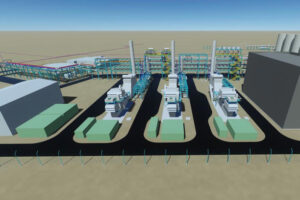A smart approach could mean half of UK’s energy is renewable by 2030
A 50% renewable energy supply, which is both profitable and secure, is possible for the UK’s electricity grid by just 2030, according to a new study. Researchers at Imperial College London have developed a plan for adapting and operating the grid so that it can be flexibly controlled through smart-grid technology while overcoming the uncertainties in renewable-energy supply and demand.
The more variable nature of some forms of renewable energy can be balanced by using adequately flexible measures.
These include adaptable fuel generation sources, active demand response (a change in consumer power consumption to match the demand for power with the supply), and better storage of power and interconnections. The big challenge is to develop a flexible power system with the adequate resources to ensure a cost-effective integration of renewables.
Greater integration of renewable energy in electricity grids is key to lowering the environmental impact ofthe power sector and meeting climate change targets. For instance, to reach the UK’s national target of an 80% cut in greenhouse gases by 2050, at least 50% of the country’s power needs to be generated by wind and solar resources.
However, only 17.8% of the UK’s electricity is currently provided by renewable sources. This compares with an average of 28% across the EU, and 23.7% globally.
According to a new study by Imperial College London, a 50% share of renewable-energy resources in the UK’s electricity grid is possible by 2030.
Researchers developed a design for retrofitting and operating the grid in 2030. They modelled the UK’s electricity grid as a number of connecting electricity-transmission lines. Where the lines meet — ‘nodes’ — they considered the demand for electricity, generation capacity, potential to install new renewable-energy sites and energy storage.
The energy mix used in the network was based on a mixture of natural gas, nuclear, wind and solar energy sources, and hydroelectric pumped-storage technologies. The researchers also analysed weather data to understand the availability of solar and wind power at different times of the day and year, and in different regions. This helped them understand when and where it is best to store and transmit renewable energy to develop schedules for flexibly operating the network, using smart-grid technology, which overcomes most uncertainties.
This exercise led to a number of possible designs, but they have various common features. For instance, wind farms are best placed at nodes in the north and solar farms in the south, to make the most of local weather conditions. New power generators are best placed near areas of high demand, such as London, to reduce operational costs, but also in remote areas, to reduce transmission losses. Energy storage is best placed at nodes with high renewable capacity and at nodes where generation capacity is much lower than demand.
Optimal schedules for operating the network in winter store large amounts of wind power in the morning, when it is mostly generated, and then use it in the afternoon. In spring and summer, large amounts of solar power are generated, which needs to be stored in the middle of the day. During these sunny periods, the need for natural gas is consequently very low and plants could be totally shut down. Nuclear plants are more inflexible, however, so would need to keep running.
Researchers say their design optimises overall profitability and security of energy supply. The cost of running the network could be around £30m a day, which also includes the costs of capital investment in renewable power generation and storage, distributed over a life span of 20 years. They describe the costs as ‘affordable and economically competitive’; the smart operating control system minimises costs.
- Source: Science for Environment Policy, July 13, 2017, A 50% renewable-energy smart-grid solution for the UK. European Commission DG Environment News Alert Service, edited by SCU, The University of the West of England, Bristol. To access articles and to subscribe, please go to http://ec.europa.eu/science-environment-policy
Photo by 1010uk 















